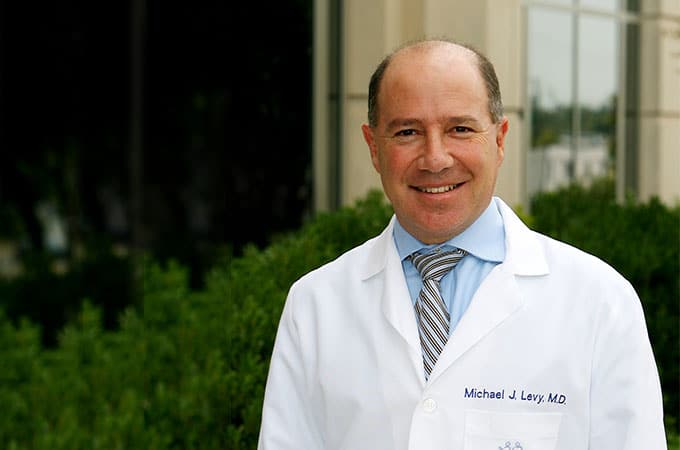It is an unfortunate reality that negative, scary headlines get readers’ attention, and it seems the number of negative headlines about egg donation have increased over the past several months. However, as the largest fertility center in the country, we think it’s important to correct some of the egg donation myths and misconceptions.
At Shady Grove Fertility, we have always focused on the egg donor and the recipient of the donor eggs as two independent patients to ensure they each receive the care they deserve. As a result, we have extensive procedures and protocols to ensure that egg donors are well-informed and well-prepared for their procedure.
Not only do egg donors receive information and preparation from our egg donor team, they are thoroughly screened to evaluate their fertility and receive U.S. Food and Drug Administration (FDA) genetic testing. Many donors express that they have benefited from the extensive medical testing that they receive, as it provides insights into their own fertility and health they would have otherwise been unaware of.
Egg Donation Myths
Many falsehoods are presented about egg donation under the guise of providing women with the information they may need to make a decision about donating to a family in need. Some of the common egg donation myths include:
- Infertility is an unregulated field of medicine.
- This is financially exploitative of vulnerable poor women by wealthy recipients and physicians.
- There are major and frequent side effects of treatment.
- There is off-label use of medications.
Egg Donation Myths: Infertility Regulations
Infertility is often regarded as one of the most regulated fields of medicine. In order to practice in this specialty, a physician has to complete a 4-year program in general obstetrics and gynecology and then proceed with a vigorous 3-year fellowship in reproductive endocrinology. These physicians then take a series of written and oral board examinations. There are less than 1,000 board certified reproductive endocrinologists in the country. Furthermore, all physicians go through extensive licensing requirements that are frequently updated.
Other infertility regulations include:
- In vitro fertilization (IVF) practices are subject to many regulatory authorities that include the embryology laboratory being certified by the College of American Pathologists, the ambulatory surgical center certified by The Joint Commission, and the endocrine laboratories certified by the Clinical Laboratory Improvement Amendments (CLIA).
- All of these organizations regularly inspect Shady Grove Fertility.
- Shady Grove Fertility has membership in the Society for Assisted Reproductive Technology (SART)—whose mission it is to establish and maintain quality standards for assisted reproductive technology (ART)—and collaborates closely with the American Society for Reproductive Medicine.
- Infertility is one of very few fields of medicine that is required to report the outcomes of procedures to the Centers for Disease Control and Prevention (CDC), including IVF and donor egg treatment.
- In addition, the FDA regulates the selection and testing of egg donors. In the last 2 years we have had 14 inspections in the many offices we have in our region.
As a highly regulated field, patients—both egg donors and patients undergoing infertility treatment—can rely on our success rates and patient care protocols, and trust that they are in good hands.
Egg Donation Myths: Compensation
Egg donors are compensated for their time and efforts. The idea that egg donors can be paid up to $50,000 for one egg donation cycle (as stated in some of the more recent articles) is a falsehood.
Excessive compensation is frowned upon by almost every fertility practice in the country and most practices offer payment to a donor of between $5,000 and $10,000. Our program will not work with any egg donor from an agency who is paid more than $10,000, and the standard payment for Shady Grove Fertility egg donors is $8,000 maximum per cycle (donors are paid $7,000 for their first donation and earn more with each cycle, up to a lifetime six-cycle maximum), regardless of their characteristics or education.
There is no “average” egg donor at Shady Grove Fertility. Our donors come from all walks of life, with a wide range of educational backgrounds and professions, and also vary greatly in terms of physical traits. And no matter who the donor is, she will receive the same compensation.
Egg Donation Myths: Side-Effects and Research
There is frequent discussion about the studies of egg donors and if egg donation is really a safe choice.
Egg donation is a medical procedure, and there are potential complications as there are with any medical procedure. However, the rate of donors experiencing this type of side effect is extremely low.
In the past 10 years, we have had over 4,000 egg donations, and of those, six egg donors have had complications (a rate of 1 in 650) requiring 1 to 3 days of hospitalization—all of whom fully recovered.
Regarding the results of those 4,000 donations, over 5,000 pregnancies have been successfully achieved through the use of donated eggs thanks to our Shared Donor Egg Program, which allows donors to help up to three couples with a single donation.
Over the last 30 years, over 6 million babies have been born from over 20 million IVF cycles worldwide. In this extensive experience, no major long-term effects have been identified, despite many in-depth studies to evaluate the possibilities. About 30 percent of the women performed in vitro fertilization (IVF) due to a male fertility issue involving sperm—meaning the female had normal fertility as they did not have age- or egg-related fertility issues, and therefore had very similar profiles to egg donors.
It is implied that there are major and frequent side effects that donors are not privy to. In response to this criticism, Shady Grove Fertility conducted an extensive study of 400 egg donors that had performed treatment between 1999 and 2012. From the responses, we were able to analyze the motivations and understanding of the consent and egg donation process. We also asked whether they chose to donate multiple times and whether they would encourage family and friends to do it. Over 90 percent reported being very well informed and over 85 percent had done more than one cycle and would recommend family and friends to do it.
Egg Donation Myths: Safe Medications
A fourth criticism of egg donation is the off-label use of medication. On the surface this may sound like a concerning issue, but the reality is that FDA labels are typically restricted to a narrow use. The reality is that many drugs have a wider use; however, pharmaceutical companies are not motivated to go through additional FDA approval, which is extensive and will not be rewarded economically. The use of Lupron in infertility is a good example of this. Some articles highlight the fact that the side effects of Lupron include joint pain and osteoporosis. It is correct that, when used for greater than 6 months, osteoporosis may result. However, for both fertility patients and egg donors alike, Lupron is currently used for a single injection in egg donor cycles and in past years it was used for 10 days.
Shady Grove Fertility’s top priority is to be the guardian of our patients’ and donors’ health. Together with our patients, the collective goal is to create families, but this will never come at the expense of someone’s well-being.
SGF egg donors have helped build thousands of families in recent years, and qualified donors typically opt to donate at least twice.
If you would like to learn more about egg donation please call 1-877-Donate-Eggs.






